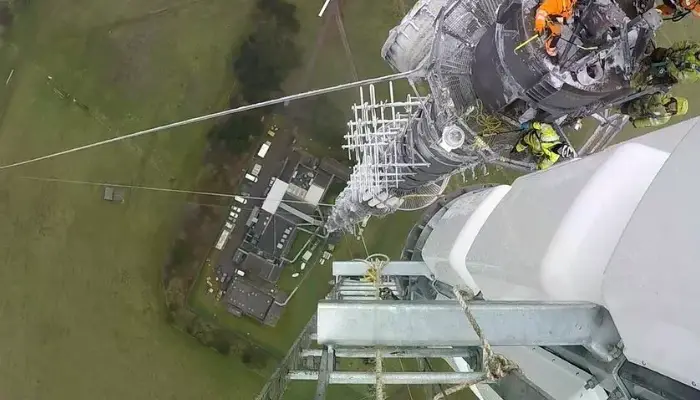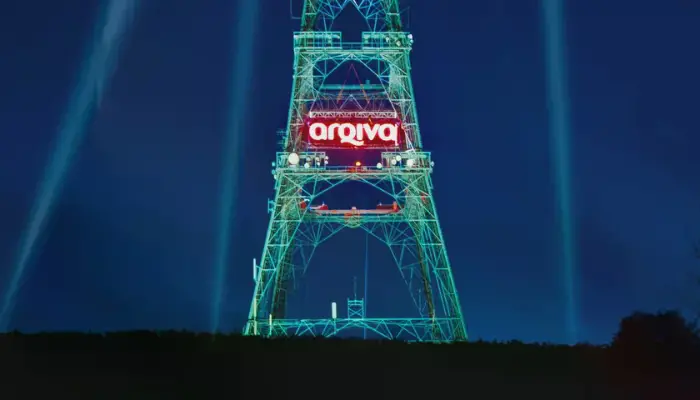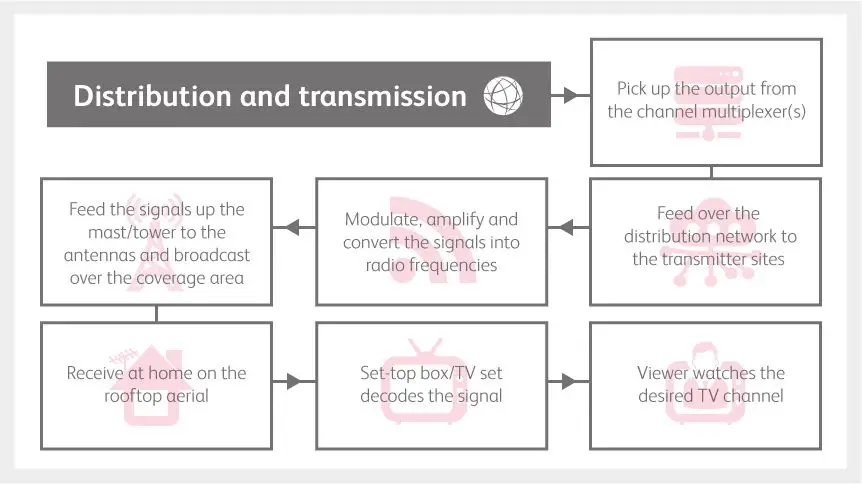From multiplex to TV viewer
We use a number of complementary networks and technologies to reach our UK transmitter network. These are used in combination to provide the most technically robust and cost-effective distribution path for each individual multiplex.
For example, for the core distribution to the top UK transmitter stations (such as Crystal Palace) we aim to use terrestrial fibre-based networks which are a combination of our self-provided and telco-provided networks and links. These networks provide the best options for cost, low latency, diversity and reliability.
For harder-to-reach sites we use microwave radio links. For back-up or sites where we can’t get microwave links, we use satellite distribution networks. The DTT relay network also uses rebroadcasting links to pick up the multiplex – from the nearest parent transmitter stations they take the incoming DTT broadcast signal, amplify it and rebroadcast to the target coverage area.
Transmission
At the transmitter site, the incoming multiplex is received from the distribution network. The signal is modified by a technique known as modulation to prepare it for transmission over the air; this is where the DVB-T or DVB-T2 signal is generated. The modulated signal is then amplified to a higher power and frequency and converted to the correct frequency in the UHF frequency band before being combined and sent up the mast or tower to the antenna system. The antenna system, usually located at the top of the mast for maximum coverage, effectively shapes and directs the signals towards the target coverage area for reception at home.
The transmission and antenna systems need to be designed to transmit between three and eight multiplexes and with varying degrees of resilience depending on the customer’s requirements.
We design, build and operate the entire transmission chain on behalf of our customers.
Reception in the home
Finally, but after less than a second of real time, the signals are received by rooftop aerials and fed to the digital TV or set top box where they are de-multiplexed and decoded to display the desired channel on the TV, either in SD or HD.
Case studies

700MHz clearance

A proud heritage of infrastructure and services

Digital Switchover

